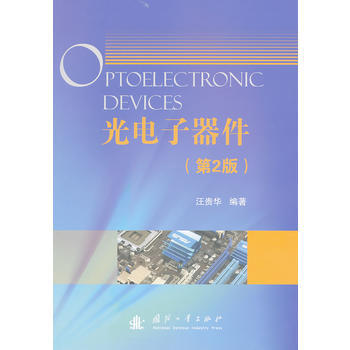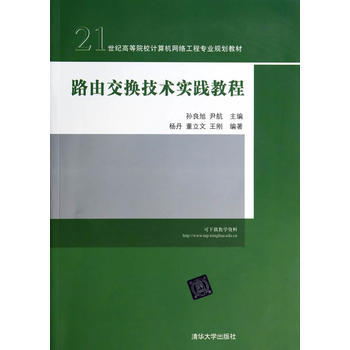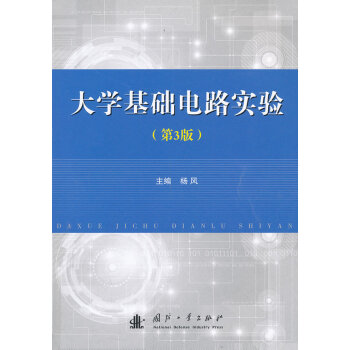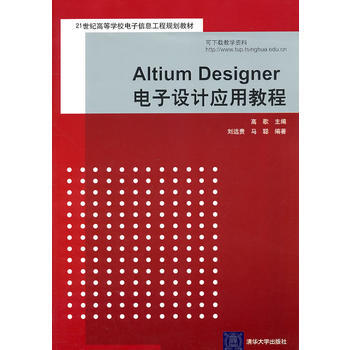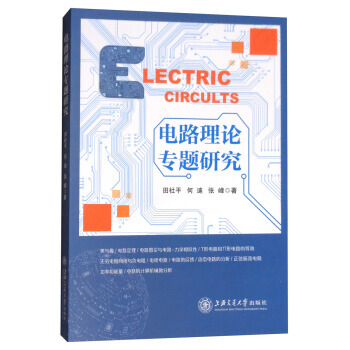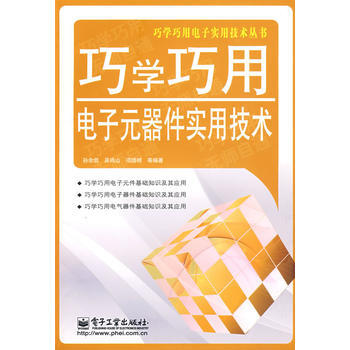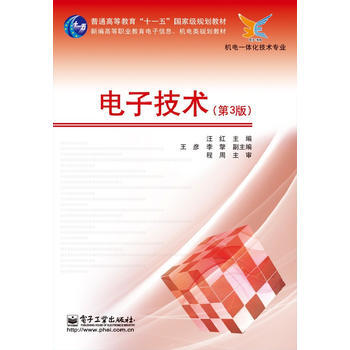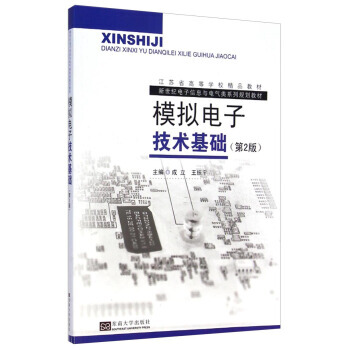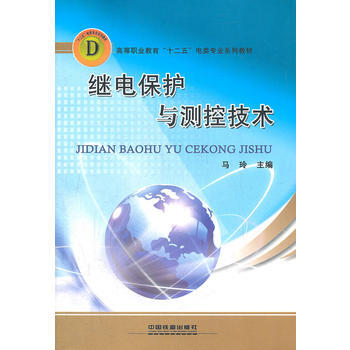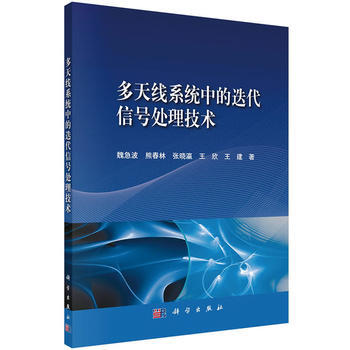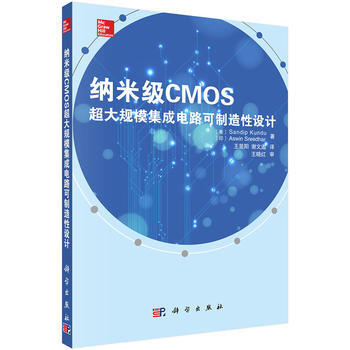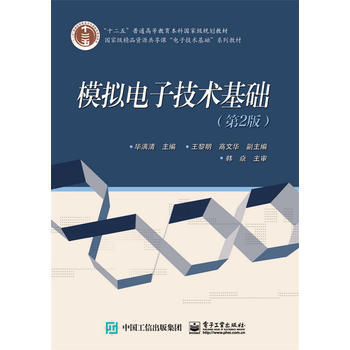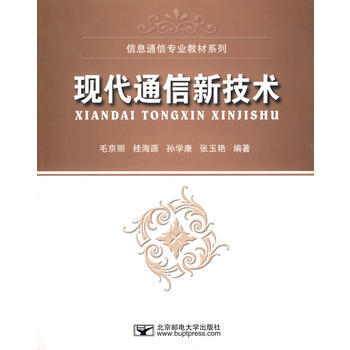

具体描述
基本信息
书名:半导体物理性能手册 卷
定价:198.00元
作者:(日)足立贞夫
出版社:哈尔滨工业大学出版社
出版日期:2014-04-01
ISBN:9787560345130
字数:
页码:
版次:1
装帧:平装
开本:16开
商品重量:0.4kg
编辑推荐
内容提要
《半导体物理性能手册(卷)(英文版)》系Springer手册精选原版系列。《半导体物理性能手册(卷)(英文版)》主要包括Diamond(C)、Silicon(Si)、Germanium(C)、Gray Tin(a—Sn)、Cubic Silicon Carbide(3C—SiC)、Hexagonal Silicon Carbide(2H—,4H—,6H—SiC,etc.)、Rhombohedral Silicon Carbide(15R—,21R—,24R—SiC,etc.)等内容。
目录
Preface
Acknowledgments
Contents of Other Volumes
1 Diamond (C)
1.1 Structural Properties
1.1.1 Ionicity
1.1.2 Elemental Isotopic Abundance and Molecular Weight
1.1.3 Crystal Structure and Space Group
1.1.4 Lattice Constant and Its Related Parameters
1.1.5 Structural Phase Transition
1.1.6 Cleavage Plane
1.2 Thermal Properties
1.2.1 Melting Point and Its Related Parameters
1.2.2 Specific Heat
1.2.3 Debye Temperature
1.2.4 Thermal Expansion Coefficient
1.2.5 Thermal Conductivity and Diffusivity
1.3 Elastic Properties
1.3.1 Elastic Constant
1.3.2 Third—Order Elastic Constant
1.3.3 Young's Modulus, Poisson's Ratio, and Similar
1.3.4 Microhardness
1.3.5 Sound Velocity
1.4 Phonons and Lattice Vibronic Properties
1.4.1 Phonon Dispersion Relation
1.4.2 Phonon Frequency
1.4.3 Mode Gruneisen Parameter
1.4.4 Phonon Deformation Potential
1.5 Collective Effects and Related Properties
1.5.1 Piezoelectric Constant
1.5.2 Frohlich Coupling Constant
1.6 Energy—Band Structure: Energy—Band Gaps
1.6.1 Basic Properties
1.6.2 E0—Gap Region
1.6.3 Higher—Lying Direct Gap
1.6.4 Lowest Indirect Gap
1.6.5 Conduction—Valley Energy Separation
1.6.6 Direct—Indirect—Gap Transition Pressure
1.7 Energy—Band Structure: Electron and Hole Effective Masses
1.7.1 Electron Effective Mass: Γ Valley
1.7.2 Electron Effective Mass: Satellite Valley
1.7.3 Hole Effective Mass
1.8 Electronic Deformation Potential
1.8.1 Intravalley Deformation Potential: Γ Point
1.8.2 Intravalley Deformation Potential: High—Symmetry Points
1.8.3 Intervalley Deformation Potential
1.9 Electron Affinity and Schottky Barrier Height
1.9.1 Electron Affinity
1.9.2 Schottky Barrier Height
1.10 Optical Properties
1.10.1 Summary of Optical Dispersion Relations
1.10.2 The Reststrahlen Region
1.10.3 At or Near the Fundamental Absorption Edge
1.10.4 The Interband Transition Region
1.10.5 Free—Carrier Absorption and Related Phenomena
1.11 Elastooptic, Electrooptic, and Nonlinear Optical Properties
1.11.1 Elastooptic Effect
1.11.2 Linear Electrooptic Constant
1.11.3 Quadratic Electrooptic Constant
1.11.4 Franz—Keldysh Effect
1.11.5 Nonlinear Optical Constant
1.12 Carrier Transport Properties
1.12.1 Low—Field Mobility: Electrons
1.12.2 Low—Field Mobility: Holes
1.12.3 High—Field Transport: Electrons
1.12.4 High—Field Transport: Holes
1.12.5 Minority—Carrier Transport: Electrons in ρ—Type Materials
1.12.6 Minority—Carrier Transport: Holes in n—Type Materials
1.12.7 Impact Ionization Coefficient
2 Silicon (Si)
2.1 Structural Properties
2.1.1 Ionicity
2.1.2 Elemental Isotopic Abundance and Molecular Weight
2.1.3 Crystal Structure and Space Group
2.1.4 Lattice Constant and Its Related Parameters
2.1.5 Structural Phase Transition
2.1.6 Cleavage Plane
2.2 Thermal Properties
2.2.1 Melting Point and Its Related Parameters
2.2.2 Specific Heat
2.2.3 Debye Temperature
2.2.4 Thermal Expansion Coefficient
2.2.5 Thermal Conductivity and Diffusivity
2.3 Elastic Properties
2.3.1 Elastic Constant
2.3.2 Third—Order Elastic Constant
2.3.3 Young's Modulus, Poisson's Ratio, and Similar
2.3.4 Microhardness
2.3.5 Sound Velocity
2.4 Phonons and Lattice Vibronic Properties
2.4.1 Phonon Dispersion Relation
2.4.2 Phonon Frequency
2.4.3 Mode Gruneisen Parameter
2.4.4 Phonon Deformation Potential
2.5 Collective Effects and Related Properties
2.5.1 Piezoelectric Constant
2.5.2 Frohlich Coupling Constant
2.6 Energy—Band Structure: Energy—Band Gaps
2.6.1 Basic Properties
2.6.2 E0—Gap Region
2.6.3 Higher—Lying Direct Gap
2.6.4 Lowest Indirect Gap
2.6.5 Conduction—Valley Energy Separation
2.6.6 Direct—Indirect—Gap Transition Pressure
2.7 Energy—Band Structure: Electron and Hole Effective Masses
2.7.1 Electron Effective Mass: Γ Valley
2.7.2 Electron Effective Mass: Satellite Valley
2.7.3 Hole Effective Mass
2.8 Electronic Deformation Potential
2.8.1 Intravalley Deformation Potential: Γ Point
2.8.2 Intravalley Deformation Potential: High—Symmetry Points
2.8.3 Intervalley Deformation Potential
2.9 Electron Affinity and Schottky Barrier Height
2.9.1 Electron Affinity
2.9.2 Schottky Barrier Height
2.10 Optical Properties
2.10.1 Summary of Optical Dispersion Relations
2.10.2 The Reststrahlen Region
2.10.3 At or Near the Fundamental Absorption Edge
2.10.4 The Interband Transition Region
2.10.5 Free—Carrier Absorption and Related Phenomena
2.11 Elastooptic, Electrooptic, and Nonlinear Optical Properties
2.11.1 Elastooptic Effect
2.11.2 Linear Electrooptic Constant
2.11.3 Quadratic Electrooptic Constant
2.11.4 Franz—Keldysh Effect
2.11.5 Nonlinear Optical Constant
2.12 Carrier Transport Properties
2.12.1 Low—Field Mobility: Electrons
2.12.2 Low—Field Mobility: Holes
2.12.3 High—Field Transport: Electrons
2.12.4 High—Field Transport: Holes
2.12.5 Minority—Carrier Transport: Electrons in p—Type Materials
2.12.6 Minority—Carrier Transport: Holes in n—Type Materials
2.12.7 Impact Ionization Coefficient
3 Germanium (C)
3.1 Structural Properties
3.1.1 Ionicity
3.1.2 Elemental Isotopic Abundance and Molecular Weight
3.1.3 Crystal Structure and Space Group
3.1.4 Lattice Constant and Its Related Parameters
3.1.5 Structural Phase Transition
3.1.6 Cleavage Plane
3.2 Thermal Properties
3.2.1 Melting Point and Its Related Parameters
3.2.2 Specific Heat
3.2.3 Debye Temperature
3.2.4 Thermal Expansion Coefficient
3.2.5 Thermal Conductivity and Diffusivity
3.3 Elastic Properties
3.3,1 Elastic Constant
3.3.2 Third—Order Elastic Constant
3.3.3 Young's Modulus, Poisson's Ratio, and Similar
3.3.4 Microhardness
3.3.5 Sound Velocity
3.4 Phonons and Lattice Vibronic Properties
3.4.1 Phonon Dispersion Relation
3.4.2 Phonon Frequency
3.4.3 Mode Gruneisen Parameter
3.4.4 Phonon Deformation Potential
3.5 Collective Effects and Related Properties
3.5.1 Piezoelectric Constant
3.5.2 Frohlich Coupling Constant
3.6 Energy—Band Structure: Energy—Band Gaps
3.6.1 Basic Properties
3.6.2 Eo—Gap Region
3.6.3 Higher—Lying Direct Gap
3.6.4 Lowest Indirect Gap
3.6.5 Conduction—Valley Energy Separation
3.6.6 Direct—Indirect—Gap Transition Pressure
3.7 Energy—Band Structure: Electron and Hole Effective Masses
3.7.1 Electron Effective Mass: F Valiey
3.7.2 Electron Effective Mass: Satellite Valley
3.7.3 Hole Effective Mass
3.8 Electronic Deformation Potential
3.8.1 Intravalley Deformation Potential: Γ Point
3.8.2 Intravalley Deformation Potential: High—Symmetry Points
3.8.3 Intervalley Deformation Potential
3.9 Electron Affinity and Schottky Barrier Height
3.9.1 Electron Affinity
3.9.2 Schottky Barrier Height
3.10 Optical Properties
3.10.1 Summary of Optical Dispersion Relations
3.10.2 The Reststrahlen Region
3.10.3 At or Near the Fundamental Absorption Edge
3.10.4 The Interband Transition Region
3.10.5 Free—Carrier Absorption and Related Phenomena
3.11 Elastooptic, Electrooptic, and Nonlinear Optical Properties
3.11.1 Elastooptic Effect
3.11.2 Linear Electrooptic Constant
3.11.3 Quadratic Electrooptic Constant
3.11.4 Franz—Keldysh Effect
3.11.5 Nonlinear Optical Constant
3.12 Carrier Transport Properties
3.12.1 Low—Field Mobility: Electrons
3.12.2 Low—Field Mobility: Holes
3.12.3 High—Field Transport: Electrons
3.12.4 High—Field Transport: Holes
3.12.5 Minority—Carrier Transport: Electrons in p—Type Materials
3.12.6 Minority—Carrier Transport: Holes in n—Type Materials
3.12.7 Impact Ionization Coefficient
4 Gray Tin (a—Sn)
4.1 Structural Properties
4.1.1 lonicity
4.1.2 Elemental Isotopic Abundance and Molecular Weight
4.1.3 Crystal Structure and Space Group
4.1.4 Lattice Constant and Its Related Parameters
4.1.5 Structural Phase Transition
4.1.6 Cleavage Plane
4.2 Thermal Properties
4.2.1 Melting Point and Its Related Parameters
4.2.2 Specific Heat
4.2.3 Debye Temperature
4.2.4 Thermal Expansion Coefficient
4.2.5 Thermal Conductivity and Diffusivity
4.3 Elastic Properties
4.3.1 Elastic Constant
4.3.2 Third—Order Elastic Constant
4.3.3 Young's Modulus, Poisson's Ratio, and Similar
4.3.4 Microhardness
4.3.5 Sound Velocity
4.4 Phonons and Lattice Vibronic Properties
4.4.1 Phonon Dispersion Relation
4.4.2 Phonon Frequency
4.4.3 Mode Gruneisen Parameter
4.4.4 Phonon Deformation Potential
4.5 Collective Effects and Related Properties
4.5.1 Piezoelectric Constant
4.5.2 Frohlich Coupling Constant
4.6 Energy—Band Structure: Energy—Band Gaps
4.6.1 Basic Properties
4.6.2 Eo—Gap Region
4.6.3 Higher—Lying Direct Gap
4.6.4 Lowest Indirect Gap
4.6.5 Conduction—Valley Energy Separation
4.6.6 Direct—Indirect—Gap Transition Pressure
4.7 Energy—Band Structure: Electron and Hole Effective Masses
4.7.1 Electron Effective Mass: Γ Valley
4.7.2 Electron Effective Mass: Satellite Valley
4.7.3 Hole Effective Mass
4.8 Electronic Deformation Potential
4.8.1 Intravalley Deformation Potential: Γ Point
4.8.2 Intravalley Deformation Potential: High—Symmetry Points
4.8.3 Intervalley Deformation Potential
4.9 Electron Affinity and Schottky Barrier Height
4.9.1 Electron Affinity
4.9.2 Schottky Barrier Height
4.10 Optical Properties
4.10.1 Summary of Optical Dispersion Relations
4.10.2 The Reststrahlen Region
4.10.3 At or Near the Fundamental Absorption Edge
4.10.4 The Interband Transition Region
4.10.5 Free—Carrier Absorption and Related Phenomena
4.11 Elastooptic, Electrooptic, and Nonlinear Optical Properties
4.11.1 Elastooptic Effect
4.11.2 Linear Electrooptic Constant
4.11.3 Quadratic Electrooptic Constant
4.11.4 Franz—Keldysh Effect
4.11.5 Nonlinear Optical Constant
4.12 Carrier Transport Properties
4.12.1 Low—Field Mobility: Electrons
4.12.2 Low—Field Mobility: Holes
4.12.3 High—Field Transport: Electrons
4.12.4 High—Field Transport: Holes
4.12.5 Minority—Carrier Transport: Electrons in p—Type Materials
4.12.6 Minority—Carrier Transport: Holes in n—Type Materials
4.12.7 Impact Ionization Coefficient
……
5 Cubic Silicon Carbide (3C—SiC)
6 Hexagonal Silicon Carbide (2H—, 4H—, 6H—SiC, etc.)
7 Rhombohedral Silicon Carbide (15R—, 21R—, 24R—SiC, etc.)
作者介绍
文摘
序言
用户评价
这本书的封面设计简直是一场视觉的盛宴,色彩搭配得恰到好处,那种深邃的蓝色调,混合着一些科技感的线条和光斑,让人一眼就能感受到它蕴含的专业性。我特别喜欢封面上那种略带磨砂质感的处理,拿在手里沉甸甸的,很有分量感,这让我对里面的内容充满了期待。装帧质量也是一流的,纸张的厚度和光洁度都非常适中,印刷清晰锐利,即便是复杂的图表和公式,看起来也毫无压力。我已经翻阅了前几页的目录和前言,那种严谨的学术态度扑面而来,能感受到作者在组织结构上的匠心独运,每一个章节的逻辑衔接都仿佛经过了千锤百炼,旨在为读者构建一个扎实且无懈可击的知识体系。对于我们这种需要频繁查阅权威资料的研究人员来说,一本实体书的物理质感和排版带来的阅读体验,是任何电子文档都无法替代的,它不仅仅是一本工具书,更像是一件值得珍藏的艺术品。
评分作为一个长期在项目一线摸爬滚打的工程师,我发现这本书的实用性远超我的预期。它不仅仅是一本理论参考书,更像是一本高级的“故障排除指南”。在描述完材料特性之后,紧接着的章节往往会深入到实际器件工作中的关键瓶颈和限制因素。比如,当讨论到MOSFET的阈值电压不理想时,书中会立刻引导读者回顾材料掺杂的均匀性、界面态密度以及栅氧的缺陷这些实际制造中极易出现问题的环节。这种将理论与工程实践紧密结合的写作风格,使得这本书的每一页都充满了解决实际问题的智慧。它不像某些学术著作那样高悬于理论的云端,而是牢牢地扎根于半导体工艺的现实土壤之中,让我感觉手中的这本书,随时都能指导我解决生产线上遇到的棘手难题。
评分初读这本书的章节安排,我立刻被它那近乎苛刻的系统性所折服。它并没有急于展示那些光怪陆离的前沿技术,而是选择从最基础的晶体结构和电子能带理论入手,层层递进,如同在攀登一座知识的高塔。这种循序渐进的教学方式,对于那些希望真正掌握半导体领域“内功心法”的读者来说,简直是福音。特别是其中对各种复杂物理现象的描述,作者似乎总能找到一个最直观、最贴近物理本质的角度去阐释,避免了过多晦涩难懂的数学推导堆砌,这一点非常难得。我个人尤其欣赏作者在引入新概念时所采用的类比手法,比如对载流子迁移率的解释,那种将抽象概念具象化的能力,极大地降低了学习曲线,让我这个非科班出身的工程师也能很快抓住核心要领。这本书更像是请了一位经验极其丰富的大师在你耳边耐心讲解,而不是冷冰冰地丢给你一堆数据。
评分这本书的整体阅读体验,给我带来了一种久违的“学术的深度感”。在现今这个信息碎片化的时代,我们很少能接触到如此结构完整、内容详实的系统性著作。作者在组织材料时,不仅关注了横向的广度——涵盖了从基础半导体到器件物理的各个层面,更注重了纵向的深度——对每一个核心概念都进行了多角度、多层次的剖析。读完一章,我总有一种意犹未尽的感觉,不是因为内容不足,而是因为作者引导我看到了更深层次的问题和未来的研究方向。这种启发性,是任何网络搜索或速查手册都无法比拟的。它不仅告诉我“是什么”,更重要的是,它教会了我“为什么是这样”,从而真正提升了我对整个半导体领域的底层认知框架。
评分这本书的细节处理上,体现出了出版方和作者对于专业读者的深刻理解。我注意到,在涉及关键参数和实验数据的部分,作者非常慷慨地提供了大量的图表和原始数据来源的引用,这极大地增强了内容的可靠性和可验证性。很多其他手册级别的书籍往往只是给出结论,而这本书却致力于展示“如何得出这个结论”的过程。随便翻开一页,里面关于半导体材料在不同温度和电场强度下的响应曲线,绘制得细致入微,标注详尽,即便是最微小的变化趋势也被清晰地捕捉并呈现在读者面前。这种对数据准确性的执着,让我对书中所有结论都深信不疑。对于需要进行精确器件建模和仿真工作的人来说,这种详尽的数据支持简直是如虎添翼,省去了我们大量自己去拟合或推算的时间,可以直接将这些经过验证的数据整合到自己的工作中去。
相关图书
本站所有内容均为互联网搜索引擎提供的公开搜索信息,本站不存储任何数据与内容,任何内容与数据均与本站无关,如有需要请联系相关搜索引擎包括但不限于百度,google,bing,sogou 等
© 2025 book.coffeedeals.club All Rights Reserved. 静流书站 版权所有

